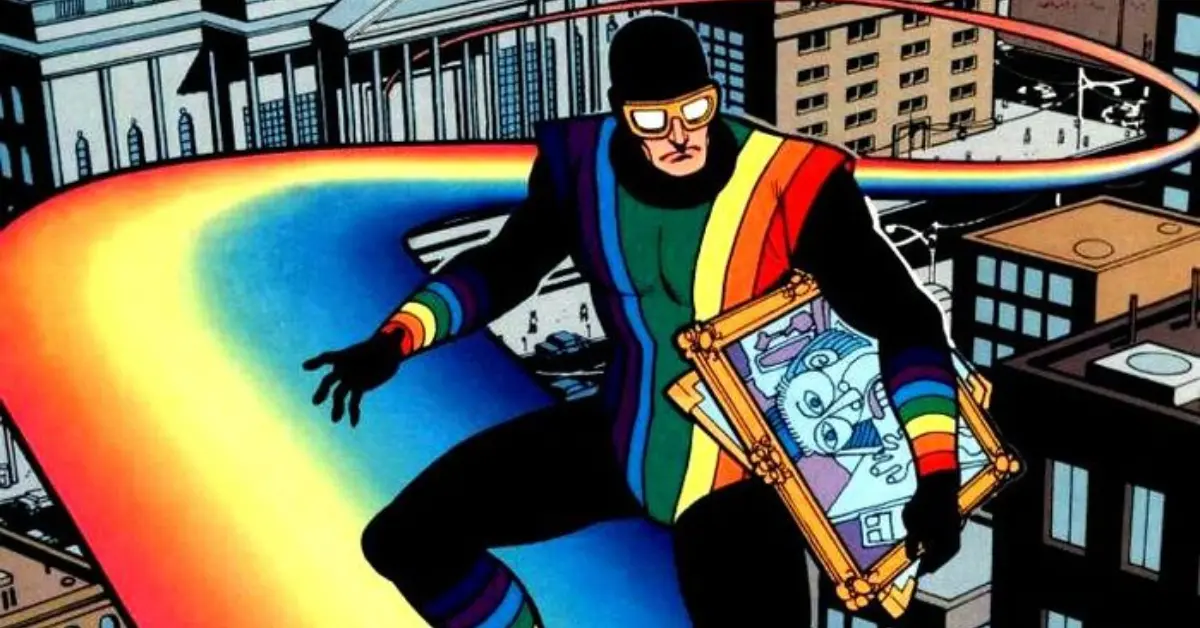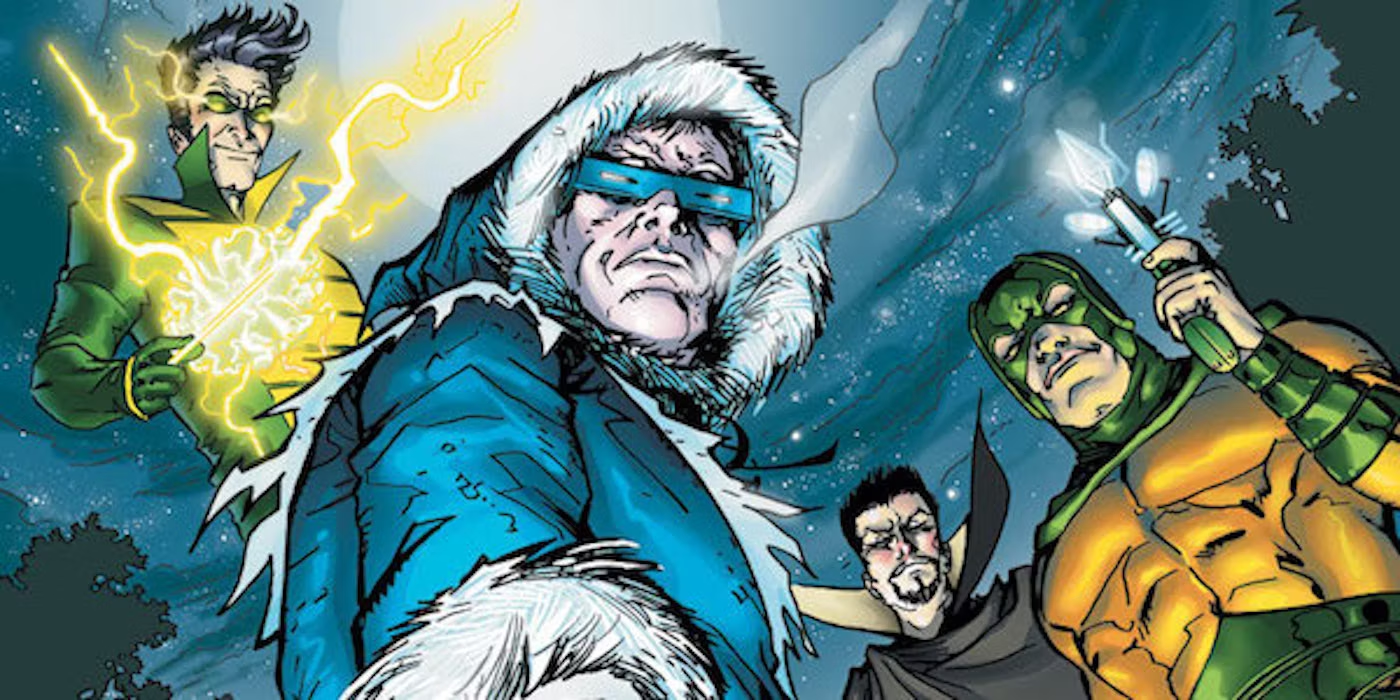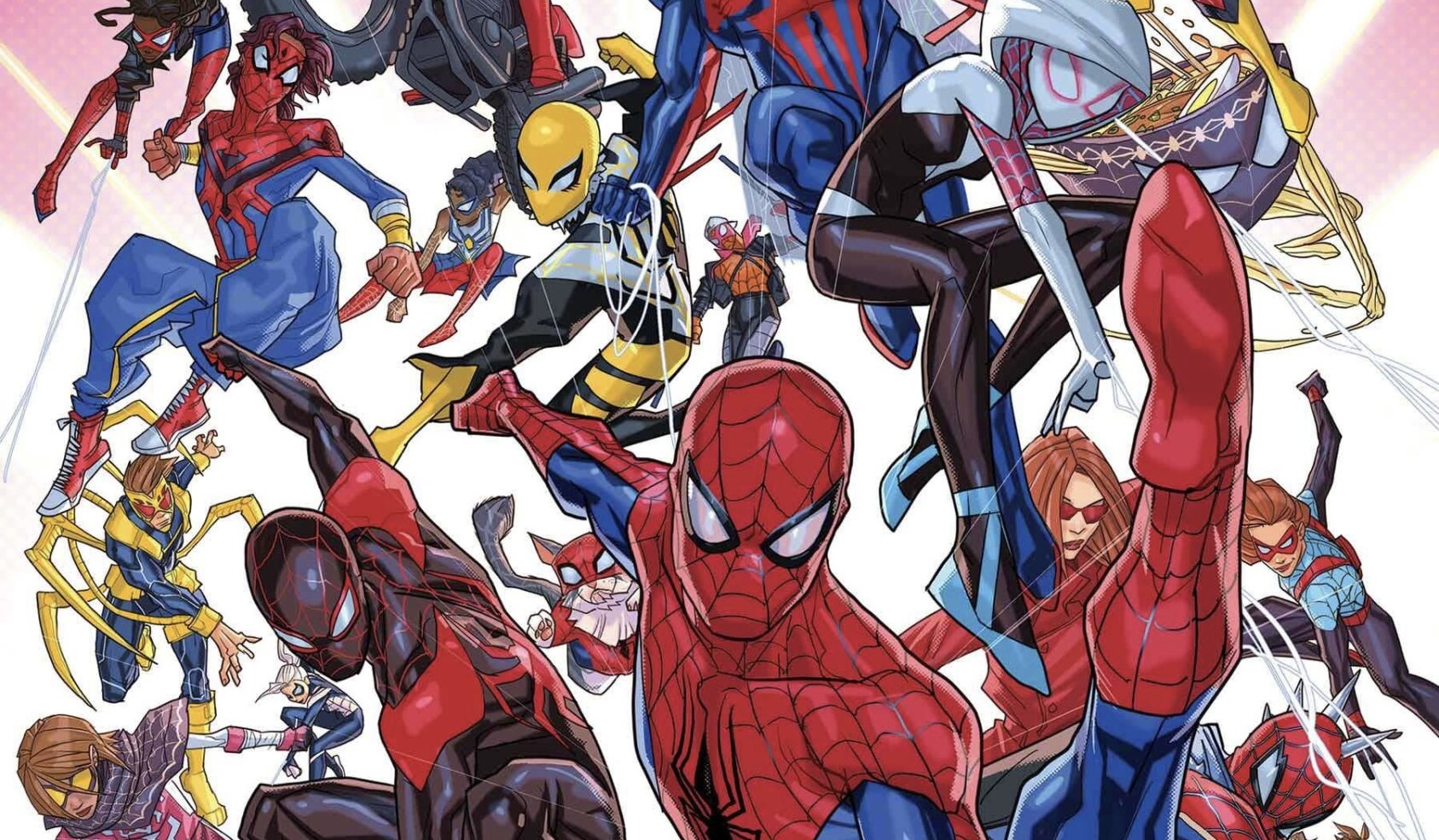When it comes to iconic villains in the DC Comics universe, names like the Joker, Lex Luthor, and Darkseid often come to mind. These characters are celebrated for their intricate backstories, complex personalities, and formidable powers. However, not every villain achieves this kind of notoriety. In the wide-ranging gallery of DC Comics’ rogues, there are a few who are considered…less than remarkable. Among them is Rainbow Raider, a character whose peculiar abilities and questionable name have made him one of the more obscure, and often ridiculed, villains in comic book history.
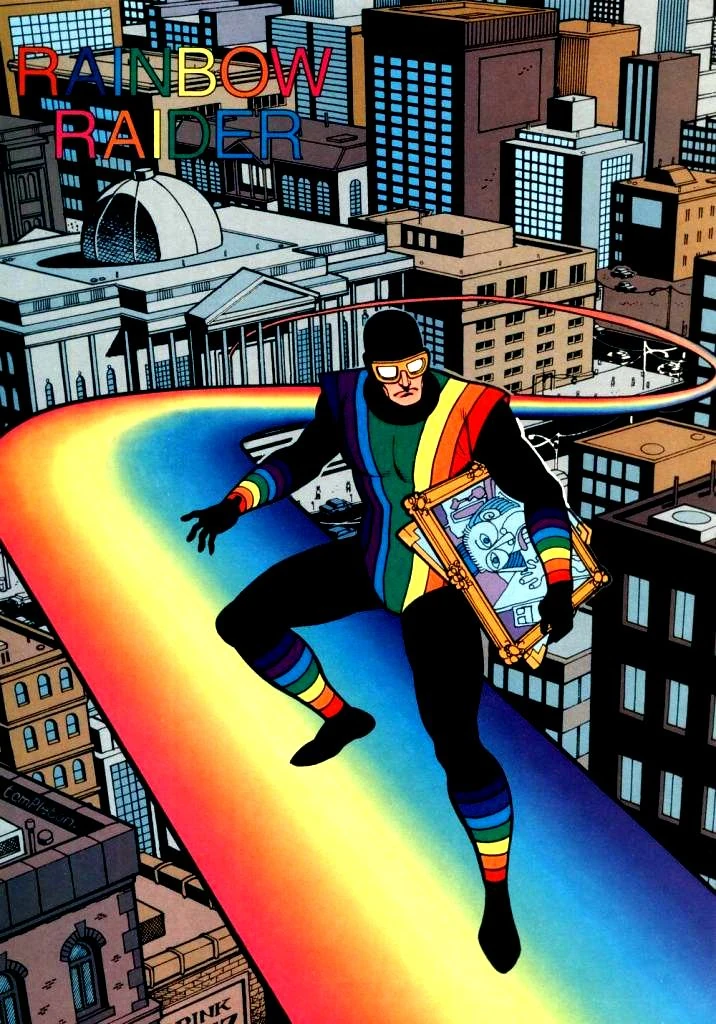
Rainbow Raider, whose real name is Roy G. Bivolo, first appeared in The Flash #286 in 1980. He was created by writer Cary Bates and artist Don Heck. With a name that is an obvious play on the colors of the rainbow (Roy G. Biv is a mnemonic for red, orange, yellow, green, blue, indigo, and violet), Roy Bivolo was destined for a colorful, if not particularly menacing, role in DC Comics’ history.
Despite his lighthearted name and abilities, Rainbow Raider is considered a villain, most notably in the rogues’ gallery of the Flash. His powers revolve around light and color, which he uses in unconventional ways to commit crimes and battle superheroes. Unlike villains driven by greed, vengeance, or megalomania, Bivolo’s origin is rooted in a far more personal and somewhat sympathetic struggle—his inability to achieve his dreams as an artist due to a lifelong disability.
Roy G. Bivolo’s story begins in a rather tragic and frustrating manner. As a young boy, Roy dreamed of becoming a great artist. He had a passion for painting and was determined to make a name for himself in the art world. However, he was born with a significant disadvantage: color blindness. His inability to see colors correctly doomed his aspirations of becoming a successful painter. No matter how hard he tried, his work was marred by his color blindness, leading to frustration and rejection from the art community.
Roy’s father, an optical scientist, was sympathetic to his son’s plight and worked tirelessly to develop a device that could cure Roy’s condition. Unfortunately, despite his best efforts, the device did not restore Roy’s color vision. Instead, it gave him the ability to project colored beams of light from his eyes, each with a unique power tied to the emotional spectrum of the person affected.
Now equipped with this bizarre ability, Roy decided to abandon his dreams of becoming a famous painter and instead turned to a life of crime. With his newfound powers, Roy adopted the alias Rainbow Raider, a name that many would find more fitting for a Saturday morning cartoon than a serious comic book villain.

The key to Rainbow Raider’s powers lies in his ability to project beams of different colored light from his eyes. Each color has a distinct effect on his victims, largely tied to emotions and mental states. While this power might seem goofy at first glance, it has the potential for serious impact under the right circumstances. Here’s a breakdown of the color spectrum he wields and the corresponding emotional effects:
– Red: Induces rage and anger.
– Orange: Causes greed and selfishness.
– Yellow: Instills fear and cowardice.
– Green: Promotes willpower and courage (though Roy usually manipulates this negatively).
– Blue: Elicits hope (or in some cases, apathy, depending on the version of his powers).
– Indigo: Triggers compassion or confusion.
– Violet: Causes love, obsession, or lust.
In essence, Rainbow Raider can control and manipulate people’s emotions by altering the colors they perceive, giving him a psychological edge over his opponents. Despite these relatively unique abilities, he has never been able to leverage his powers effectively enough to be a major threat, often being quickly outwitted or defeated by heroes like the Flash.
Rainbow Raider also possesses a prism-like device on his costume, which can create solid light constructs, enabling him to form objects and barriers out of pure light. This would give him an offensive and defensive toolset, but his creative use of the power is limited by his own lack of ingenuity, leading to many defeats.
Rainbow Raider’s debut in The Flash #286 saw him taking on Barry Allen, the second Flash. His initial plan involved using his powers to rob banks and commit heists, manipulating people’s emotions to cause chaos and distract them while he made his escape. As one might expect, this plan didn’t hold up long against the Scarlet Speedster, and Bivolo was quickly apprehended.
Despite his relatively simple introduction, Rainbow Raider returned multiple times in DC Comics, usually as a member of the Flash’s rogues’ gallery, teaming up with other villains like Captain Cold, Heat Wave, and Weather Wizard. However, he rarely stood out on his own, often relegated to the role of a secondary or tertiary villain in bigger stories.
Notably, Rainbow Raider joined the Rogues, the infamous group of Flash villains. The Rogues are known for their camaraderie and honor among thieves, but even among their ranks, Rainbow Raider was considered a lesser player. His reliance on color-based powers was often outmatched by more dangerous abilities wielded by his peers.
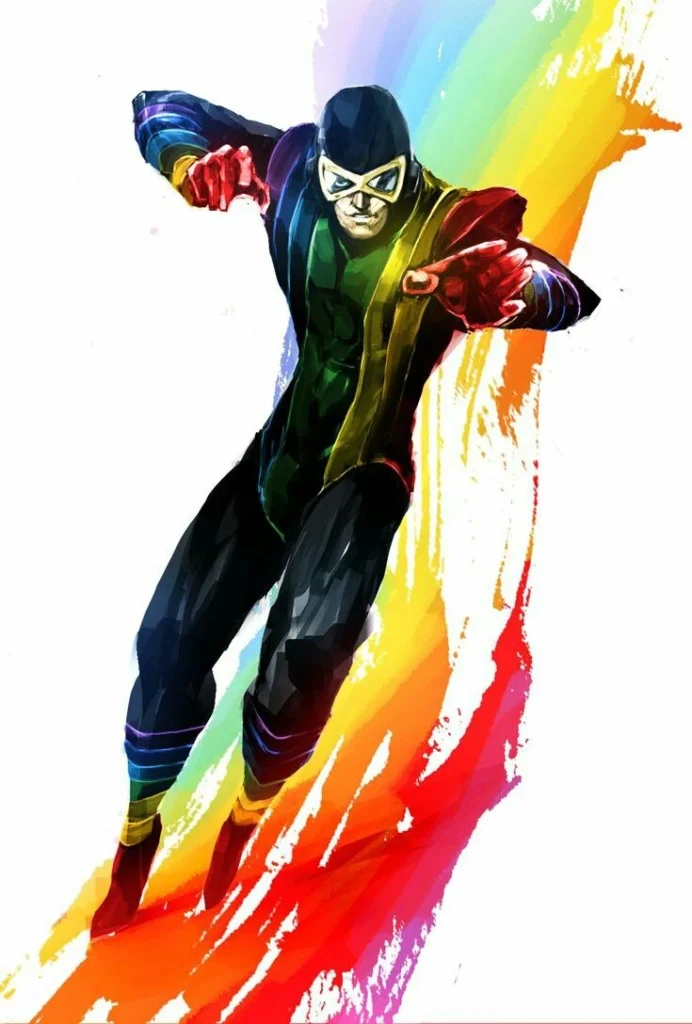
In several comic book storylines, Roy G. Bivolo became the butt of many jokes, with both readers and characters within the comics seeing him as more of a nuisance than a serious threat. Despite this, he continued to make sporadic appearances in DC Comics over the decades, often serving as a punching bag for heroes during crossover events or as comedic relief during lighter story arcs.
One of Rainbow Raider’s most notable appearances came in the storyline “Underworld Unleashed” (1995), where he, along with other villains, was offered enhanced powers by the demon Neron. In exchange for their souls, these villains could gain immense power. Rainbow Raider, however, failed to capitalize on this opportunity and was not a key player in the event. This storyline further emphasized his status as a minor villain, unable to rise above his obscure origins.
In the 2000s, during “Infinite Crisis”, Rainbow Raider met his demise at the hands of the villain Blacksmith, who reformed the Rogues with the intent of turning them into a more formidable force. His death, however, didn’t mark the end of the Rainbow Raider mantle, as the name was later picked up by a new character, Chandra Nalaar, who briefly wielded color-based powers before fading into obscurity herself.
Rainbow Raider’s reputation as one of DC Comics’ worst villains stems from a combination of factors, primarily his outlandish name and underwhelming powers. In a universe filled with villains who can destroy planets or manipulate reality, a man who shoots colored light beams from his eyes simply doesn’t measure up.
Additionally, Rainbow Raider lacks the depth and nuance that make other villains compelling. His motivations are clear but shallow, and he has never been given the opportunity to evolve beyond his original conception. While other villains have undergone reboots or revisions to make them more threatening or interesting, Rainbow Raider has remained largely unchanged since his introduction, forever tethered to his absurd concept.
Another reason for his low standing in the villain hierarchy is that he’s rarely posed a significant threat to any hero. The Flash, for example, has numerous enemies who challenge him on physical, emotional, or intellectual levels—Captain Cold’s cunning, Reverse-Flash’s vendetta, and Gorilla Grodd’s intellect, to name a few. Rainbow Raider, on the other hand, usually serves as a minor obstacle, easily thwarted in a few panels.

In a world where comic book villains are often remembered for their terrifying power, compelling backstories, or cunning strategies, Rainbow Raider stands out for all the wrong reasons. His powers, though unique, are never fully realized, and his name has become synonymous with lower-tier villainy. While Rainbow Raider may never be as feared as the Joker or as respected as Lex Luthor, he holds a peculiar place in DC Comics lore—a reminder that not every villain can be a winner.
Despite his shortcomings, Rainbow Raider has persisted for decades, showing up in cartoons, video games, and even the Arrowverse’s The Flash TV series. His continued presence in the DC Universe is a testament to the fact that, even in comic books, sometimes the most unlikely characters manage to endure.

